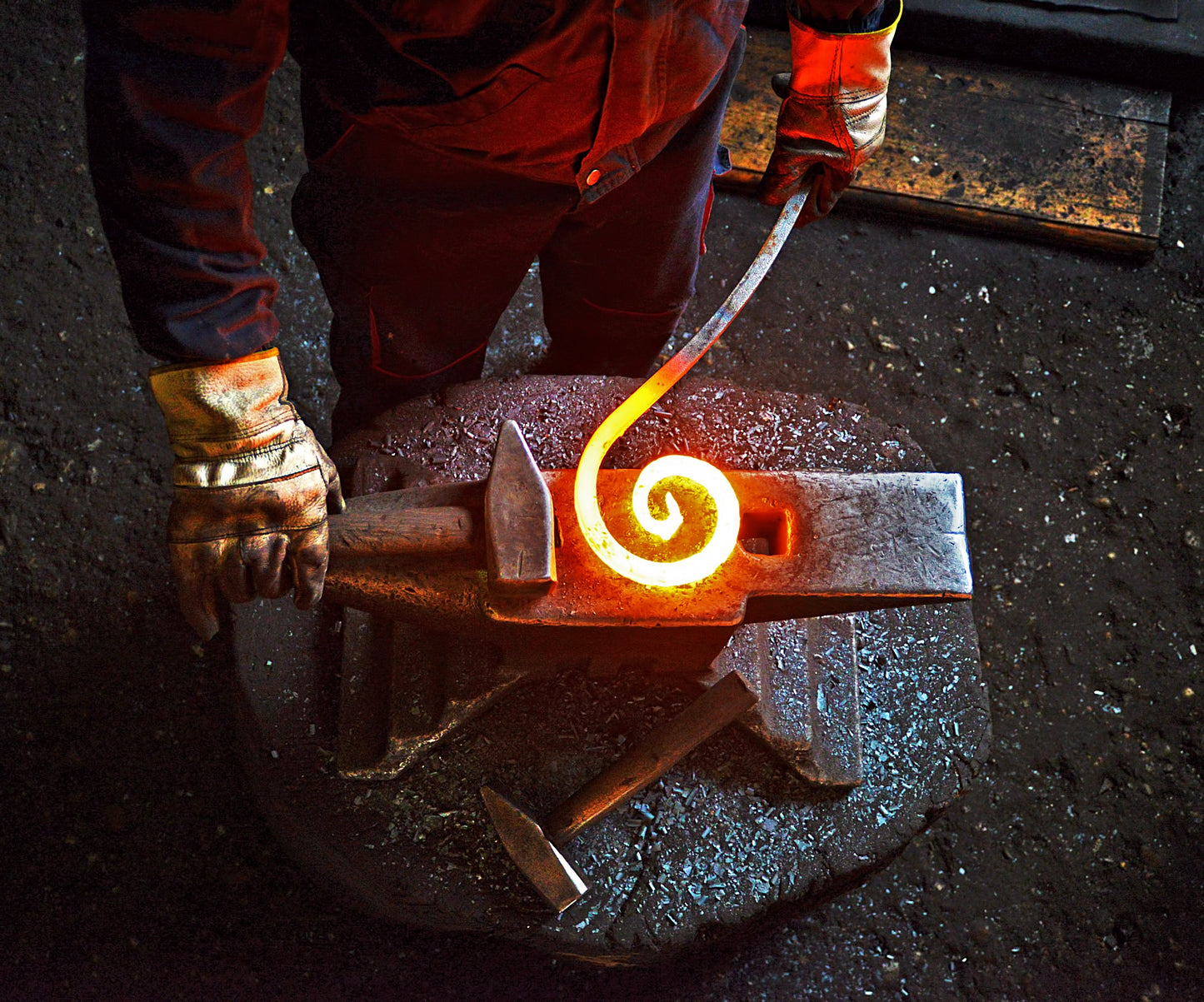
Choosing hand-forged ironwork is about more than function—it’s about connection. A connection to the past, to craftsmanship, and to the pride of building something that lasts. It’s a statement that you care about quality, tradition, and originality.
In a time when everything from tools to furniture is mass-produced in overseas factories, the words hand forged carry a weight of authenticity, heritage, and craftsmanship. These aren’t just marketing buzzwords—they speak to a centuries-old tradition of working metal with fire, hammer, and human hands.
But what does hand forged really mean? What is the process of forging, and why does it matter in today’s world of click-to-buy convenience? Let’s dive into the rich, rugged world of blacksmithing and explore why hand-forged ironwork remains a symbol of quality, strength, and artistry.
The True Meaning of "Hand Forged"
At its core, hand forged refers to metal that has been shaped by hand, using heat and force, without relying on automated machines. This process typically involves heating the metal—usually iron or steel—to a glowing red or yellow temperature in a forge, and then shaping it manually with hammer blows on an anvil.
Unlike cast or stamped metal, which is poured into molds or pressed into shape, hand-forged items are built up and shaped by human force and vision. Every curve, texture, and surface tells a story—no two pieces are exactly alike. They carry the fingerprints of the blacksmith's experience, their decision-making in the moment, and their deep understanding of the materials.
At
What Is Forging?
Forging is one of the oldest metalworking techniques known to man. Dating back thousands of years, it was used by blacksmiths in nearly every ancient civilization to craft swords, plows, architectural elements, and tools. At its essence, forging is the process of forming and strengthening metal by applying heat and pressure.
There are several types of forging:
-
Hand forging: Traditional blacksmithing done manually with hammer and anvil.
-
Drop forging: Uses a die and heavy mechanical hammer or press to shape heated metal.
-
Closed-die or impression forging: Used for high-volume industrial parts where consistency is key.
-
Cold forging: Done at room temperature using extreme pressure (not typical for artistic or architectural ironwork).
While industrial forging focuses on volume and uniformity, hand forging emphasizes strength, design integrity, and aesthetic individuality. That’s why it’s still the preferred method for artisans, historic restoration, and those who value one-of-a-kind craftsmanship.
The Craftsmanship Behind Every Hammer Blow
When you choose a hand-forged piece from
A typical hand forging process might look like this:
-
Heating the raw metal in a forge until it reaches a malleable, glowing state.
-
Shaping the metal on an anvil using tongs, hammers, and chisels.
-
Detailing the piece with textures, twists, or decorative elements.
-
Cooling and hardening the metal, sometimes using a quenching process.
-
Finishing with oils, patinas, or blacksmith waxes for protection and visual character.
This hands-on process results in pieces with subtle variations and textures—signs of real human touch. Whether you’re selecting unique iron corbels for your timber frame project or choosing rustic iron wall décor for a cabin entryway, these handcrafted details add soul to your space.
Why Does Hand Forging Matter Today?
In the modern marketplace, where fast and cheap often trumps durable and meaningful, hand-forged work stands apart. Here’s why it still matters:
-
Strength and longevity: Forged metal is denser and stronger than cast alternatives.
-
Historical authenticity: Ideal for period homes, restorations, and anyone looking to preserve architectural integrity.
-
Unique character: Each item is a one-off—no cookie-cutter sameness.
-
Sustainability: Supporting small-scale metalworking keeps traditional skills alive and reduces reliance on overseas manufacturing.
When you install hand-forged hinges, mount a forged speakeasy grill, or fasten a beam with Tuscan-style lag bolts, you're adding not just hardware, but heritage to your home.
Final Thoughts: The Legacy of the Forge
Choosing hand-forged ironwork is about more than function—it’s about connection. A connection to the past, to craftsmanship, and to the pride of building something that lasts. It’s a statement that you care about quality, tradition, and originality.
At
Explore our full collection today and bring the power of the forge into your own home.





